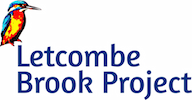Report Incidents and FAQs
Reporting Pollution
If you see evidence of a pollution event on the Letcombe Brook or any other waterbody please contact the Environment Agency 24 Hour Incident Line on 0800 807 060 as soon as possible. Afterwards please also let the LBP Project Officer know on info@letcombebrook.org.uk quoting the EA incident Number. This is for follow up action only, we cannot provide an emergency service.
Reporting Flooding
Please contact the Environment Agency 24 Hour Incident Line on 0800 807 060 as soon as possible. Afterwards please also let the LBP Project Officer know on info@letcombebrook.org.uk quoting the EA incident Number. This is for follow up action only, we cannot provide an emergency service.
I am a riparian owner – what are my responsibilities?
Can I help look after Letcombe Brook?
Yes you can! Please look at our Volunteering page. www.letcombebrook.org.uk/index.php/volunteer
Who is the responsible for flood risk management on the Letcombe Brook?
Vale of the White Horse District Council carry out flood risk management, deal with drainage applications and modifications to the river-bank work on ordinary watercourses. Letcombe Brook is an ordinary watercourse from Letcombe Bassett to Locks Lane, Wantage.
Downstream from the mill at Locks Lane all the way until it joins the Childrey Brook it is classed as a Main River, with the Environment Agency being responsible for managing flood risk and dealing with maintenance, improvement and construction work and permitting issues.
All Riparian Owners have a responsibility for their section of the brook. Letcombe Brook Project do not have any legal authority or responsibility but are pleased to offer independent advice.
I am concerned the brook is low, what can I do?
Letcombe Brook is a chalk stream and fed by groundwater which usually has a fairly constant flow. Water levels can reduce after periods of dry weather and this is a natural process. At times of very low flow, fish may get trapped or start to suffer.
If you see this happening please contact Environment Agency 24 Hour Incident Line on 0800 807 060 as soon as possible. Afterwards please also let the LBP Project Officer know on info@letcombebrook.org.uk quoting the EA incident Number. This is for follow up action only, we cannot provide an emergency service.
I’ve seen dead fish in the brook, what should I do?
If you see more than one dead fish in the brook, or fish gasping for air it may be as a result of a pollution incident so please see if you can see any other signs of pollution. If you think there may have been a pollution incident then please call the Environment Agency 24 Hour Incident Line on 0800 807 060
Can I fish on Letcombe Brook?
There are no permits issued for fishing on the Letcombe Brook as it is not stocked and only supports low numbers of wild brown trout so please just enjoying watching the trout rather than trying to catch them!
Can I use a crayfish trap on Letcombe Brook?
You can use a crayfish trap but these must be licenced by the EA to ensure they are not dangerous to other wildlife such as otters. Go to www.gov.uk/guidance/permission-to-trap-crayfish-eels-elvers-salmon-and-sea-trout#crayfish-trap-authorisation. You must also ask the landowners permission.
Can I make changes near a waterbody on my property?
You must find out which permissions and licences you need to maintain, repair, build or remove anything in or around a watercourse. Go to www.gov.uk/guidance/owning-a-watercourse for further advice.
Can I reinforce my section of bank?
Not without first seeking permission (see above). We would be happy to come out and give initial advice on this issue.
How should I manage my section of river bank?
Riverbank should be left in as close to natural state as possible to ensure no loss of this precious habitat which provides an important green corridor for many species. LBP are happy to provide expert impartial advice if you think you do need to make some changes.
Can I extract water from Letcombe Brook?
Extraction can usually only take place under licence, please contact the Environment Agency for further advice.
Fallen Tree?
If a tree has fallen across the brook contact the landowner in the first instance, it is their responsibility to remove any obstructions to the flow of water in the brook.
Himalayan Balsam - what should I do?
If you have any of this non-native invasive plant on your property, please remove it by hand-pulling it before it seeds. Leave it on the banks as it rots down quickly, it should not be put in your garden waste bin.
What can I safely put down the drain?
Road and surface water drains are designed to carry only rainwater and often empty directly into local watercourses so please do not put anything other than water down them. See www.gov.uk/government/publications/avoiding-pollution-yellow-fish-scheme
| This October is Unblocktober, the first national awareness campaign challenging people to break habits that damage the health of our environment. Millions of us put waste liquids and items into our drainage systems and sewers that lead to untold damage on the environment around us. So, whether it’s making a pledge to cool and scrape fats, oils and grease into the bin, or installing a bin in your bathroom for all the items that should not be flushed down the loo, Find out how you can get involved www.unblocktober.org
|
How can I save water?
For help with reducing water use please go to www.thameswater.co.uk/Be-water-smart
How do I report a wildlife sighting?
Thames Valley Environmental Records Centre (TVERC) are keen to receive records of wildlife sightings so that this information can be used to highlight important areas for wildlife that may need protection from development.
Who do I report problem footpaths to?
Oxfordshire County Council deal with issues relating to rights of way. Try www.oxfordshire.gov.uk/residents/environment-and-planning/countryside/countryside-access/public-rights-way/report-footpath-issue

